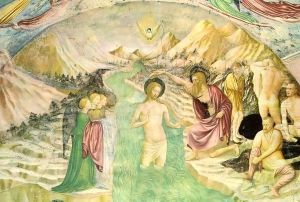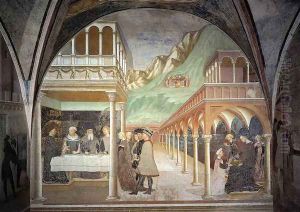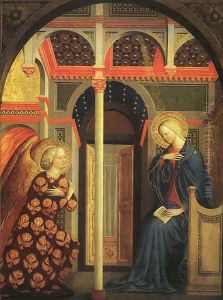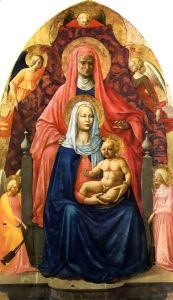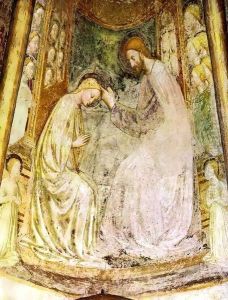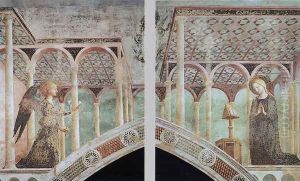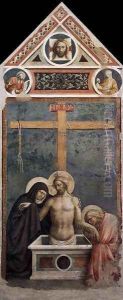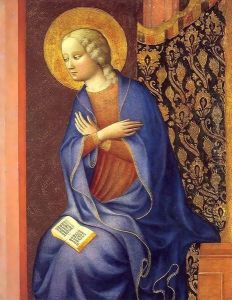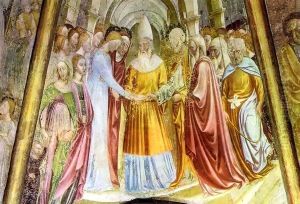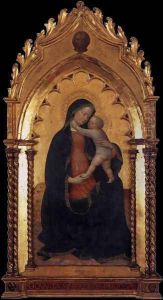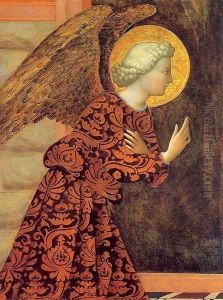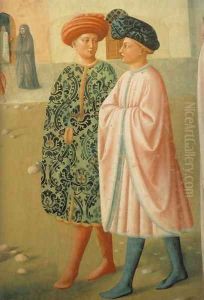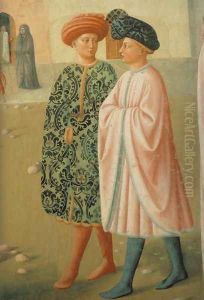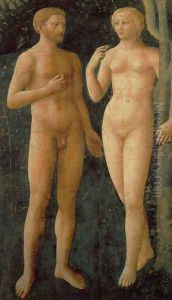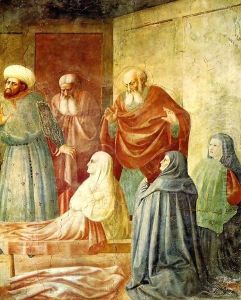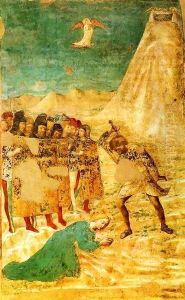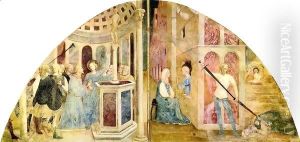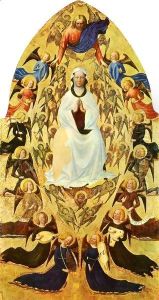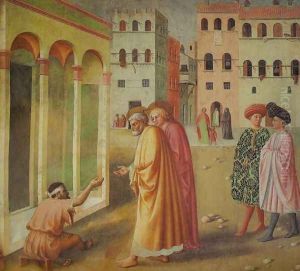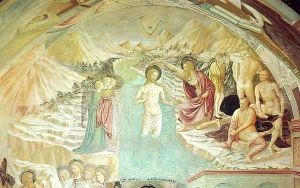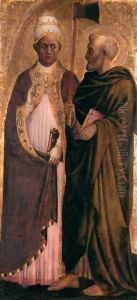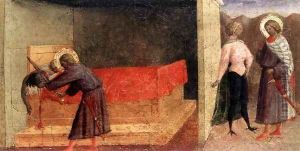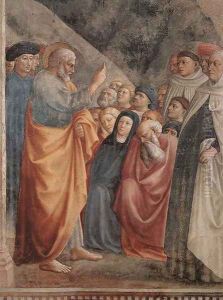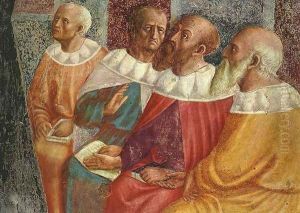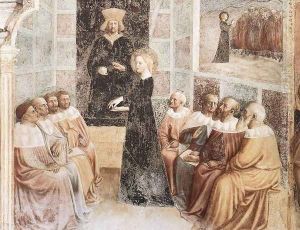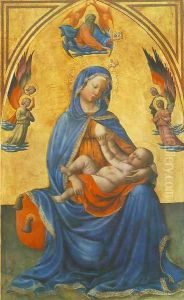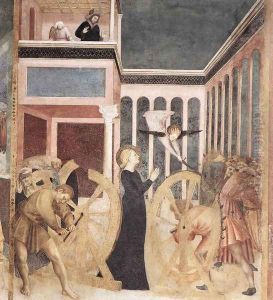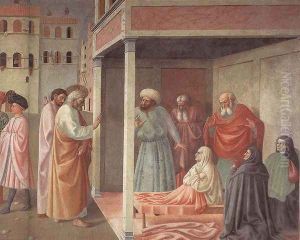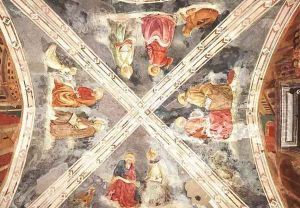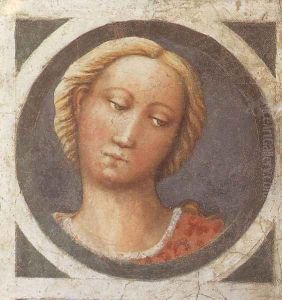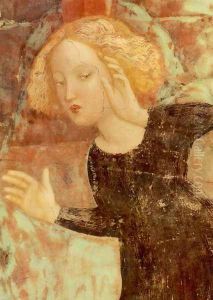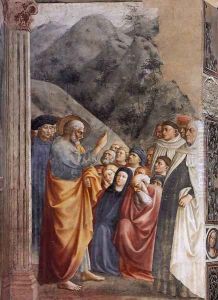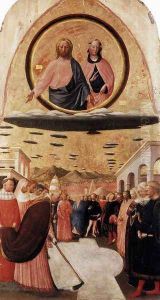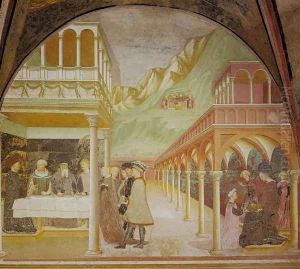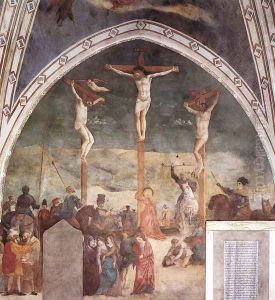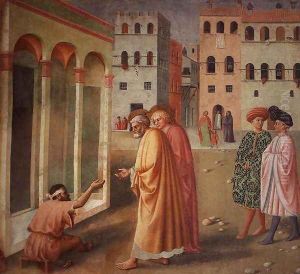Tommaso Masolino (da Panicale) Paintings
Tommaso di Cristoforo Fini, better known as Masolino (da Panicale), was an Italian painter born in 1383 in the small town of Panicale, near Florence. His nickname, 'Masolino', meaning 'Little Tom' or 'Little Thomas', distinguishes him from his contemporary and pupil, Masaccio, with whom he often collaborated. Masolino's work bridges the late Gothic tradition with the emerging Renaissance style, showcasing a delicate use of color and a nuanced understanding of human emotion and narrative.
Masolino received his artistic training in Florence, possibly in the workshop of Gherardo Starnina, and his early works exhibit the influence of the International Gothic style. However, it was his collaboration with Masaccio, particularly on the frescoes of the Brancacci Chapel in Florence around 1424-1428, that marked a turning point in his career. These frescoes are celebrated for their innovative use of perspective and chiaroscuro, techniques that were revolutionary at the time.
Despite the fame of the Brancacci Chapel frescoes, Masolino's career extended beyond this collaboration. He was commissioned to work on various projects across Italy and even in Hungary. Among his notable works are the frescoes in the Collegiata di Castiglione Olona, which demonstrate his mastery of color and light, and the panel paintings that reveal his meticulous attention to detail and composition.
Masolino's style is characterized by its elegance and grace, often focusing on the beauty and serenity of his figures rather than the more dramatic expressions and muscular dynamism that Masaccio would employ. His scenes are imbued with a lyrical quality, and his use of perspective, while innovative, maintains a narrative clarity that serves the story being told.
Though Masolino's contributions were somewhat overshadowed by the towering figure of Masaccio in the history of art, recent scholarship has begun to appreciate his role in the development of Renaissance art. His nuanced approach to painting, blending late Gothic sensibilities with the emerging Renaissance perspective, marks him as a significant figure in the transition between these two great epochs of art history. Masolino died in 1447, leaving behind a legacy that captures the dawn of the Renaissance.
